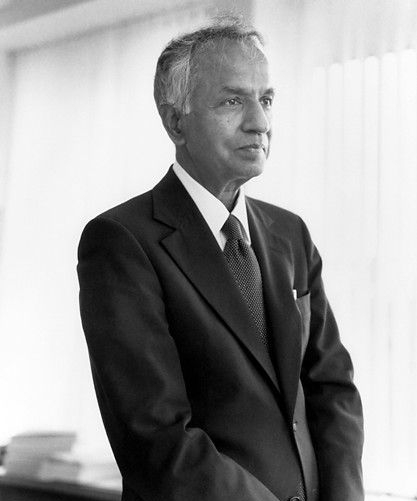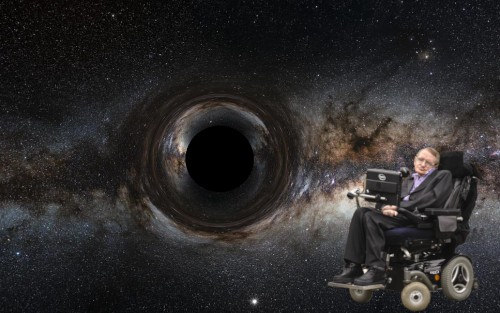We are going to discover from the first prediction of a black hole(in 1784) to Albert Einstein and Subrahmanyan Chandrasekhar theories that helps us to understand the nature and types of black-holes and Sir Stephen hawking’s knowledge that leads us present-day progress of this most mysterious object in cosmos...
History :
The idea of a body so massive that even light could not escape was briefly proposed by astronomical pioneer John Michell in a letter
published in November 1784, his calculation assumes that such body has the same density as the Sun and the surface escape velocity exceeds the
usual speed of light.
But actual journey starts in 1915 when Albert Einstein developed his theory of general relativity and shows gravity does
influence light's motion with that basics Karl Schwarzschild and many other scientists independently describe their own solution of the Einstein field
equations, which describes the gravitational field of a point mass and a spherical mass. This solution had a peculiar behavior at what is now called the
Schwarzschild radius, where it became singular, meaning that some terms in the Einstein equations became infinite.


 In 1931, Subrahmanyan Chandrasekhar
calculated, using special relativity, that a non-rotating body of electron-degenerate matter above a certain limiting mass (now called the Chandrasekhar
limit at 1.4 M☉) has no stable solutions.
In 1931, Subrahmanyan Chandrasekhar
calculated, using special relativity, that a non-rotating body of electron-degenerate matter above a certain limiting mass (now called the Chandrasekhar
limit at 1.4 M☉) has no stable solutions.
His arguments were opposed by many of his contemporaries like Eddington and Lev Landau, who argued that some yet unknown mechanism would stop the collapse.
They were partly correct, a white dwarf slightly more massive than the Chandrasekhar limit will collapse into a neutron star, which is itself stable.
But in 1939, Robert Oppenheimer and others predicted that neutron stars above another limit (the Tolman–Oppenheimer–Volkoff limit) would collapse further for the
reasons presented by Chandrasekhar, and concluded that no law of physics was likely to intervene and stop at least some stars from collapsing to black holes. Their original calculations,
based on the Pauli exclusion principle, gave it as 0.7 M☉; subsequent consideration of strong force-mediated neutron-neutron repulsion raised the estimate to approximately 1.5 M☉ to 3.0 M☉.
Observations of the neutron star merger GW170817, which is thought to have generated a black hole shortly afterward, have refined the TOV limit estimate to ~2.17 M☉.
Black holes cannot be observed directly on account of both their small size and the
fact that they emit no light. They can be “observed,” however, by the effects of their enormous gravitational fields on nearby matter.
For example, if a black hole is a member of a binary star system, matter flowing into it from its companion becomes
intensely heated and then radiates X-rays copiously before entering the event horizon of the black hole and disappearing forever.
One of the component stars of the binary X-ray system Cygnus X-1 is a black hole. Discovered in 1971 in the constellation Cygnus, this binary consists of a blue supergiant and an invisible companion 8.7 times the mass of the Sun that revolves about one another in a period of 5.6 days.
In 1994 the Hubble Space Telescope provided conclusive evidence for the existence of a supermassive black hole at the center of the M87 galaxy. It has a mass equal to six billion Suns but is no larger than the solar system.
In 2005, infrared observations of stars orbiting around the position of Sagittarius A* demonstrated the presence of a black hole with a mass equivalent to 4,310,000 Suns.
Definition and Parts
Black hole, the cosmic body of extremely intense gravity from which nothing, not even light, can escape.
The singularity constitutes the center of a black hole and is hidden by the object’s “surface,” the event horizon. Inside the event horizon, the escape velocity (i.e., the velocity required for matter to escape from the gravitational field of a cosmic object) exceeds the speed of light, so that not even rays of light can escape into space.
The radius of the event horizon is called the Schwarzschild radius, The size of the Schwarzschild radius is proportional to the mass of the collapsing star. For a black hole with a mass 10 times as great as that of the Sun, the radius would be 30 km (18.6 miles).
Only the most massive stars—those of more than three solar masses—become black holes at the end of their lives. Stars with a smaller amount of mass evolve into less compressed bodies, either white dwarfs or neutron stars.
Black holes are completely characterized by only three parameters: mass, rotation, and charge
By Mass
Primordial Black Holes
Have masses comparable to or less than that of the Earth.
These purely hypothetical objects could have been formed through the gravitational collapse of regions of high density at the time of the Big Bang.
. Depending on the model, primordial black holes could have initial masses ranging from 10−8 kg to more than thousands of solar masses. However, primordial black holes with a mass lower than 1011 kg would have evaporated due to Hawking radiation in a time much shorter than the age of the Universe, so they cannot have survived until the present Universe.
Stellar Mass Black Holes (small but deadly)
Have masses between about 4 and 15 solar masses and result from the core-collapse of a massive star at the end of its life.
Such an object packs three times or more the mass of the sun into a city-size range. This leads to a crazy amount of gravitational
force pulling on objects around it. Black holes consume the dust and gas
from the galaxy around them, growing in size. According to the Harvard-Smithsonian Center for Astrophysics, "the Milky Way
contains a few hundred million" stellar black holes
Intermediate Mass Black Holes (Stuck in middle - IMBHs)
Perhaps a few thousand solar masses may also exist. Sketchy evidence suggests that they may be found in some clusters of stars, and may eventually grow into supermassive black holes. Such bodies could form when stars in a cluster collide in a chain reaction. Several of this forming in the same region could eventually fall together in the center of a galaxy and create a supermassive black hole. In 2014, astronomers found what appeared to be an intermediate-mass black hole in the arm of a spiral galaxy
Supermassive Black Holes (Birth of giants)
Weight between 106 and 109 solar masses and are found at the centers of most large galaxies. Supermassive black holes are millions or even billions of times as massive as the sun but have a radius similar to that of Earth's closest star. Such black holes are thought to lie at the center of pretty much every galaxy, including the Milky Way. Scientists aren't certain how such large black holes come in existence. Once they've formed, they gather mass from the dust and gas around them, material that is plentiful in the center of galaxies, allowing them to grow to enormous sizes.
By Rotation and Charge
-
Schwarzschild Black Hole
Otherwise known as a ‘static black hole’, does not rotate and has no electric charge. It is characterized solely by its mass.
- Kerr Black Hole
Is a more realistic scenario. This is a rotating black hole with no electrical charge.
- Charged Black Hole
Can be of two types. A charged non-rotating black hole is known as a Reissner-Nordstrom black hole, a charged, rotating black hole is called a Kerr-Newman black hole.
Stephen Hawking Contribution
Hawking also helped confirm the Big Bang theory. From Einstein’s equations,
he and Penrose showed that 13.8 billion years ago the universe emerged violently from a single compressed point no bigger than an atom.
In 1974, Hawking published a paper that contained one of the strangest ideas yet about black holes. Hawking showed that black holes can actually shrink.
The reason, he said, was that black holes shed particles and radiate energy — a phenomenon that came to be known as “Hawking radiation.”
And this conclusion meant that rather than being voids producing nothing at all , black holes actually glow.
Hawking went on to show that while large black holes emit radiation as a slow dribble, small ones glow, emitting lots of radiation quickly.
He showed that all black holes eventually evaporate or boil themselves away, expiring in a brilliant burst of energy equivalent to a million 1-megaton hydrogen bombs.
This journey continuous with “Information paradox” and cosmic inflation. Which leads us to his recent paper (these we will discuss in another blog)...

In current time...
- Astrophysicist around the world focus on physics that exist near the center of a black hole is being made possible using "loop quantum gravity"
- Nine radio observatories around the world, including four in the US and one in Antarctica, make up the EHT. They all turn on simultaneously,
combining to make a single, powerful “virtual telescope” spanning the planet. The Event Horizon Telescope (EHT) has already made its first
observations of the supermassive black hole at the center of our galaxy and it would be one of the most awaited events for every science lover …

By far our journey towards and a black hole is as really
excellent, a century before we don’t even know about its existence and in
present time we are waiting for first ever image capture by earth size
telescope